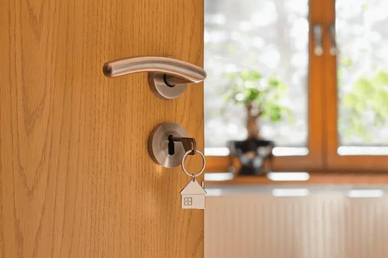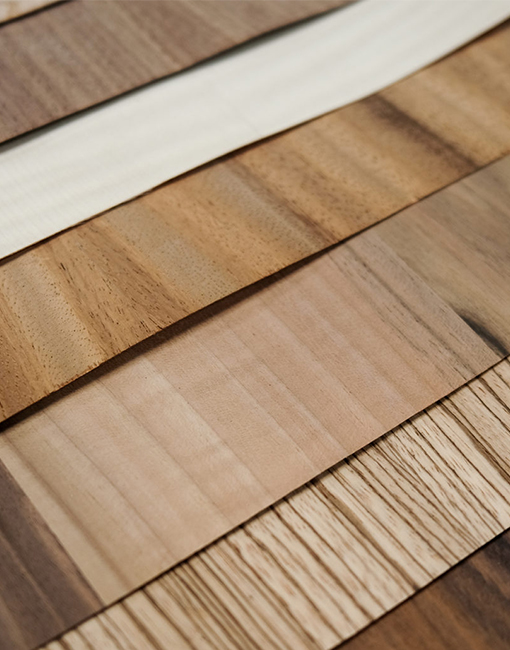Choosing the right wood is about more than just aesthetics. It directly impacts the door’s durability, insulation, maintenance, and how it blends in with its surroundings. Whether it’s an entry door, shower enclosure, or closet panel, the choice of wood can have a significant impact on its performance and style.

I. Why Wood Choice Matters in Door Performance and Aesthetics
For centuries, wood has been used in door construction for its natural strength, versatility, and beauty. However, not all woods are created equal.
• Some are more resistant to moisture,
• Others offer better insulation,
• And others stand out for their unique grain and luxurious finishes.
• Interior and exterior doors also have different structural and environmental requirements.
Choosing the wrong wood for the wrong application can cause the wood to warp, crack, or increase maintenance costs over time.
Interior doors are often designed for beauty, affordability, and functionality in addition to being lightweight. Exterior doors, on the other hand, must withstand temperature changes, rain, and potential UV exposure, requiring wood with greater natural resistance or the use of appropriate surface treatments.
II. Factors That Influence the Best Wood Choice
Selecting suitable wood for your doors involves several technical and practical considerations:
● Climate and Humidity Conditions
Woods like teak and mahogany handle high-humidity or coastal climates better due to their natural oils and tight grains. In dry or temperature-variable environments, wood that’s prone to cracking or expanding may not be suitable unless engineered or sealed well.
● Door Placement
• Entry Doors: They require strength, weather resistance and dimensional stability.
• Bedroom/Bathroom Doors: Need moderate sound insulation and style compatibility.
• Closet or Sliding Doors: Focus on lightweight structure and design flexibility.
● Desired Finish
Some woods absorb stains and paints evenly (e.g., maple), while others display their natural grain beautifully without requiring much treatment (e.g., walnut). Choose the finish based on how much of the wood's natural character you want to highlight.
● Budget and Long-Term Maintenance
Hardwoods tend to be more expensive but last longer. Softwoods are cost-effective but may require more upkeep. Consider both initial investment and lifecycle costs.
● Sustainability and Sourcing
Eco-conscious buyers should consider FSC-certified or locally sourced woods. Engineered woods using recycled materials are also becoming increasingly popular.
III. Popular Types of Wood for Doors
Below is a breakdown of widely used wood species in door manufacturing, including their characteristics, pros and cons, and ideal applications:
| Wood Type | Description | Pros | Cons | Best Use |
|---|---|---|---|---|
| Oak | Dense hardwood with strong grain | Durable, widely available | Heavy, expensive | Main doors, bedrooms |
| Teak | Rich in oils, tight grain | Moisture-resistant, elegant | Costly, limited sourcing | Bathrooms, exteriors |
| Pine | Softwood, light color | Affordable, easy to paint | Prone to dents, less durable | Closets, light-use rooms |
| Mahogany | Deep reddish-brown tone | Stable, weather-resistant | Higher cost | Entrances, luxury spaces |
| Walnut | Rich tone and smooth texture | High aesthetic appeal | Cost, limited UV resistance | Living rooms, modern interiors |
| Ash | Light in color, good elasticity | Easy to shape, strong | Requires sealing | Bedrooms, custom patterns |
| Maple | Uniform grain, dense | Great for paint, clean finish | Can stain unevenly | Kitchens, modern interiors |
| Cherry | Warms and darkens over time | High-end appearance | Sensitive to sunlight | Luxury interiors, study rooms |
This comparison shows that the "very good" wood depends on your specific needs, including appearance, durability, climate exposure, and cost preferences.
IV. Solid Wood vs. Engineered Wood in Doors
In addition to traditional solid wood, many doors today use engineered wood materials. These are designed for increased stability and environmental friendliness while offering a similar appearance to natural timber.
● What Is Engineered Wood?
Engineered doors typically have a core made from HDF, plywood, or particleboard. The outer layer is finished with a veneer of real wood or decorative laminate.
● Comparison Overview:
Feature Solid Wood Engineered Wood Durability High, especially hardwood Good, with proper core & veneer Moisture Resistance Depends on species Better with sealing Aesthetics Rich natural grains Mimics natural look Cost Higher Moderate to low Weight Heavier Lighter ● When Engineered Wood is Better
For interior spaces with moderate wear and tear, engineered doors are ideal. They are more dimensionally stable, resist warping better, and can be tailored for specific design needs at a lower cost.
V. Wood Treatments and Finishing Options
Proper treatment enhances the wood’s durability and beauty. Here are the main finishing options and their functions:
● Stains & Sealants
These help to highlight or alter the wood’s natural tone while protecting the surface from wear.
● UV Protection
Especially important for exterior doors and rooms with large sun-facing windows. Prevents fading and discoloration.
● Waterproof Coatings
Essential for bathrooms and kitchens, these prevent moisture infiltration and swelling.
| Finish Type | Purpose | Ideal Use |
|---|---|---|
| Oil-based Sealant | Deepens color, protects | Main doors, hardwood interiors |
| Water-based Polyurethane | Clear coat, less odor | Bedroom, kids’ rooms |
| UV Coating | Blocks sunlight damage | Outdoor-facing doors |
| Lacquer | Smooth, shiny surface | Decorative panels |
A good finish not only preserves the wood but also enhances its natural character.
VI. Common Mistakes When Choosing Door Wood
Even when good options are available, many buyers overlook these important considerations:
• Ignoring Local Climate: Using pine in a high-humidity area, for example, can cause to swelling and paint peeling.
• Choosing by Looks Alone: Aesthetics matter, but not at the cost of durability or practicality.
• Incompatible Finish Choices: Not all woods absorb stains or paints evenly; mismatched finishes can look uneven or wear out faster.
Avoiding these errors ensures your doors look great and perform well for years.
VII. Expert Recommendations Based on Use
Here’s a practical summary of which woods are very suitable for different areas of your home:
| Door Location | Recommended Wood | Reason |
|---|---|---|
| Main Entrance | Teak, Mahogany | Excellent weather resistance and strength |
| Interior Bedroom | Oak, Ash | Good acoustic insulation and stylish appearance |
| Bathroom Door | Teak, Engineered Wood | Moisture resistance is key |
| Closet Door | Pine, MDF w/ veneer | Lightweight, cost-effective, easy to customize |
This framework ensures each space has the right balance of function and design.
VIII. Final Thoughts
The choice of door wood is not only a functional decision—it’s a defining element of your space. By understanding the characteristics of various wood types, evaluating environmental factors, and pairing the right finish, homeowners and designers can ensure long-term satisfaction with their choices.

If you're seeking doors that reflect both craftsmanship and practicality, working with a trusted manufacturer makes all the difference.
Zhejiang Haibo Door Co., Ltd. brings years of expertise in producing wooden, engineered, and custom-designed doors tailored to diverse living and commercial spaces. Our commitment to quality material selection, advanced manufacturing, and design flexibility means you get doors that look as good as they perform.

 English
English русский
русский Français
Français Español
Español bahasa Indonesia
bahasa Indonesia عربى
عربى



